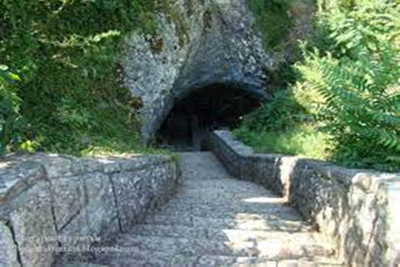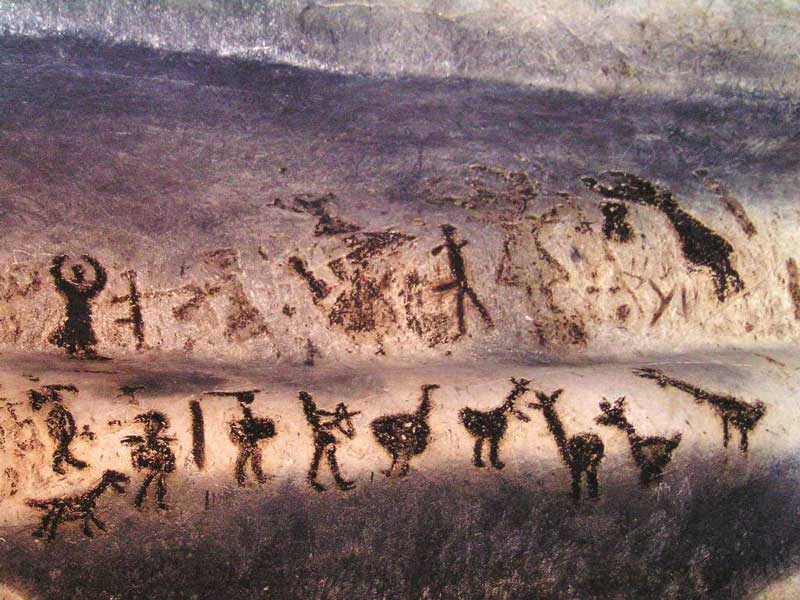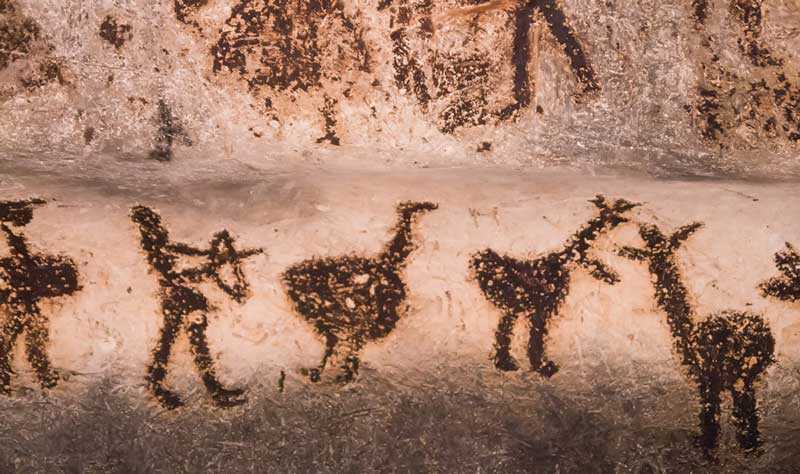
Reckoned as one of the largest and most beautiful caves in Bulgaria and famous for its prehistoric cultural finds, including the famous cave paintings, the Magura Cave is located in the limestone Rabisha burial mound, around 17 km from Belogradchik in northeast Bulgaria.
The 2.5 km long cave with a constant temperature of 12 degree Celsius, consisting of one main gallery with six chambers and three side branches, contains around 750 prehistoric images, which are estimated to be made between 10.000 and 8.000 years ago. Widely considered to be the masterpieces and most significant work of art of the European Post-Paleolithic era, the cave was induced into the tentative list of UNESCO World Heritage Sites in 1984.

Recognised as a natural landmark, the Magura Cave offers one of the richest collections of geological formations of all shapes and sizes, which include stalactites, stalagmites, columns, Geodesic formations, cave pearls and flows of Cave Milk, also called Moon milk, a white and creamy substance found in limestone, dolomite and possibly other types of caves. While the Giant Column, found in the cave, is more than 65 feet (20 m) tall on a 13 feet (4 m) base, the Fallen Pine with its length of over 36 feet (11 m) and a base that has a diameter of about 19.5 feet (6 m), is another of the largest stalagmites discovered in the cave.
Some of the beautiful stalactites and stalagmites formations in the cave were named according to their shapes, which include the Cactus, the Poplar, the Oriental City and the Pipe Organ.

The paintings on the walls of the Magura Cave, representing the everyday life and main events of the people living in the area, belong to different eras, which covers from the early Paleolithic till the beginning of the Bronze Age, including the Neolithic and the late Neolithic Age. Apart from the paintings relating to the special events, the other paintings in the cave can be broadly categorised into four groups: animals, symbols, anthropomorphic and geometric. Those paintings depict the silhouettes of men and women, people wearing masks, animals, stars, tools and plants. From some of the associated figures, it is possible to recognize dancing, hunting and even mating scenes. A large horizontal dance and hunting scene arranged in two main rows in the so-called Cult Hall, is perhaps the best known and the most reproduced image of the Magura Cave.
However, among the paintings relating to the special events, the Fertility Dance and the Hunting Ceremony are perhaps rank among the most noteworthy paintings.

While the animals are represented by mammals like cattle, bison, buffalo, antelopes, goat-antelopes and dogs, the geometric signs in the cave paintings of Magura show horizontal and vertical parallel zigzags, vertical parallel lines, stair-like patterns, tree-like figures, T-shaped figures, crossed circles and many more. However, perhaps the most interesting among the images is the one, which has been recognised as a solar calendar. According to the suggestion of the Bulgarian researchers, it represents the oldest European Neolithic Solar Calendar, representing 366 days, with images of black and white squares used to count the days.

The Magura Cave has been protected since 1993 and access to the area of the paintings is restricted in a desperate effort to preserve them. But before that, free access to the area resulted in vandalising some of the invaluable drawings and scratches on the walls. Today, guided visits are conducted by the staff of Belogradchik, who are responsible for the management of the cave since 2012.